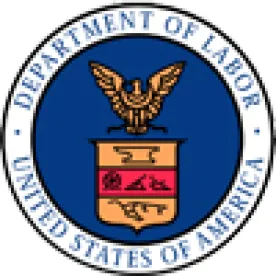The final rule has implications for plan sponsors and may impact certain relationships with service providers.
On April 6, after a long (and some might say tortured) process, the US Department of Labor (DOL) issued a final rule revising the definition of who is considered a fiduciary under the Employee Retirement Income Security Act of 1974, as amended (ERISA) and Section 4975 of the Internal Revenue Code by virtue of providing investment advice to covered plans and accounts. The final rule is the culmination of a nearly seven-year undertaking by the DOL and US President Barack Obama’s administration to expand the universe of retirement plan advisers who are subject to the fiduciary standards of ERISA and the prohibited transaction provisions of Section 4975 of the Code.
The final rule will have a significant impact on the financial services community and will affect how many retirement plans receive investment advice from financial services institutions. While the rule’s most dramatic effects are likely to be on IRAs and their investment providers, ERISA plan fiduciaries need to be cognizant of the provisions directed towards them and the actions they will need to take given the sea change in this area.
Definition of “Investment Advice” and “Recommendation”
The final rule will expand significantly on who is considered an investment advice fiduciary under ERISA and Section 4975 of the Code. Specifically, under the current DOL regulations (adopted more than 40 years ago), an adviser would only be considered a fiduciary if the advice arrangement meets a five-part test focused on, among other things, the advice being ongoing in nature, specifically directed to the plan recipient, and pursuant to a mutual understanding of the nature of the relationship.[1] At the time the original changes were proposed in 2010, the DOL expressed the view that this regulation allowed many financial professionals to avoid fiduciary status by drafting their contracts specifically to rebut a conclusion that there was a mutual understanding or that the advice was ongoing in nature. The final rule attempts to address this perceived evasion of ERISA’s coverage.
Under the new definition, a person will be considered to provide investment advice to a plan or IRA (or their respective participants, beneficiaries, fiduciaries, or owners) if he or she provides either
-
a recommendation as to the advisability of acquiring, holding, disposing of, or exchanging securities or other investment property, or a recommendation as to how securities or other investment property should be invested after the securities or other investment property are rolled over, transferred, or distributed from the plan or IRA; or
-
a recommendation as to the management of securities or other investment property, including, among other things, recommendations on investment policies or strategies; portfolio composition; selection of other persons to provide investment advice or investment management services; selection of investment account arrangements (e.g., brokerage versus advisory); or recommendations with respect to rollovers, transfers, or distributions from a plan or IRA, including whether, in what amount, in what form, and to what destination such a rollover, transfer, or distribution should be made.[2]
Further, the above-described recommendation types must be made by a person who either directly or indirectly
-
represents or acknowledges that he or she is acting as a fiduciary within the meaning of ERISA or the Code;
-
renders the advice pursuant to a written or verbal agreement, arrangement, or understanding that the advice is based on the particular investment needs of the advice recipient; or
-
directs the advice to a specific advice recipient or recipients regarding the advisability of a particular investment or management decision with respect to securities or other investment property of the plan or IRA.
Notably, this definition removes the requirements that the arrangement be ongoing in nature and/or pursuant to a mutual understanding. As such, it may be more difficult for financial service providers to use disclaimers to avoid fiduciary status. Additionally, the final rule will now specifically treat advice related to rollovers and distributions from plan accounts as fiduciary in nature. This is a reversal of the DOL’s prior position as outlined in the Deseret advisory opinion, where the DOL opined that such advice would not, in itself, render the adviser a fiduciary under ERISA or Section 4975 of the Code.[3]
Activities Not Considered a “Recommendation”
Given the broad definition of what constitutes a “recommendation” for purposes of the final rule, the DOL clarifies that the following types of specified activities will not be considered recommendations:
-
Limited assistance provided by platform providers to plan fiduciaries (but not to plan or IRA participants, beneficiaries, or owners) regarding the selection and monitoring of plan investments. Generally, this guidance must not be individualized, and the provider must disclose any financial interest in any specified alternatives provided. This exclusion will be particularly important for plan fiduciaries who rely on their recordkeepers to assist them in the selection and monitoring of the plan investments. Plan fiduciaries should consider whether such recordkeepers are, or should be, fiduciaries under the new rule given the roles that they play for the plan.
-
General communications that a reasonable person would not consider an investment recommendation—such as general circulation newsletters, public talk shows, news reports, and marketing materials. Plan fiduciaries who disseminate these types of generalized materials to plan participants will need to be careful that they do not comment on or otherwise cause these types of materials to subject the dissemination to fiduciary review.
-
With respect to investment education, the DOL has long advised that such materials would not be considered fiduciary advice. Determining whether these materials cross the line to advice has always been, and continues to be, a difficult endeavor. The final rule incorporates much of the prior guidance on investment education. This exclusion from the definition of a recommendation is described more fully below.
Activities Not Giving Rise to Fiduciary Status
Additionally, the DOL created certain additional exceptions that will not be treated as investment advice where the person does not represent or acknowledge that it is a fiduciary:
Independent Fiduciary Exception. The final rule creates an exception for communications with sophisticated investors that are presumed to know that a financial professional may not be acting in their best interests and to be able to distinguish between a financial professional selling a product and providing investment advice. The list of such sophisticated professionals includes
- banks,
- insurance companies,
- certain registered investment advisers,
- broker-dealers registered with the US Securities and Exchange Commission (SEC), and
- independent plan fiduciaries with at least $50 million under their management or control
The financial professional transacting with these sophisticated fiduciaries must know or reasonably believe that the independent fiduciary is capable of evaluating investment decisions of the type involved in the transaction. Further, the “seller” must disclose any known conflicts and its financial interest in the transaction. Finally, the adviser may not receive a fee directly from the plan for providing advice in connection with the transaction or otherwise represent that it is a fiduciary of the plan in connection with the transaction. The Independent Fiduciary Exception, therefore, allows the adviser to receive fees in connection with products it sells to a plan provided that a fiduciary with financial expertise is making the decision on behalf of the plan to purchase a product. Notably, the exception does not apply advice that may be provided in the course of selling a product to IRA owners and/or individual plan participants.
-
Swap Transactions. There is an exception, similar to the Independent Fiduciary Exception, for advice given by counterparties in connection with various swaps and derivatives transactions. Like the Independent Fiduciary Exception, there must be a fiduciary independent of the counterparty representing the plan; however, this fiduciary does not need to meet the financial expertise requirements. To rely on this exception, the counterparty must receive a written representation from the plan fiduciary that the counterparty is not a fiduciary to the plan for purposes of the transaction.
-
Employees. If certain conditions are met, employees of plan sponsors or their affiliates may provide limited investment advice to plan fiduciaries or to participants without such advice becoming subject to ERISA. For an employee who provides advice to plan fiduciaries, the principal condition is that the employee may not receive any compensation for the advice (beyond the employee’s normal compensation for plan sponsor work). For an employee who provides advice to plan participants, the employee’s job responsibilities may not involve the provision of investment advice or investment recommendations, the employee may not be registered or licensed under federal or state securities or insurance laws, the employee’s advice may not require registration or licensing under such laws, and the employee may not receive any direct or indirect fee or other compensation in connection with the advice beyond the employee’s normal compensation for work performed for the employer. Accordingly, great care should be taken by plan sponsors to ensure that their in-house treasury, human resources, and other investment staff can qualify for these exceptions.
The Best Interest Contract Exemption
Even with the exceptions described above, the final rule will cause many service providers to be deemed fiduciaries under ERISA and Section 4975 of the Code. For ERISA covered plans, this means that the service provider would be subject to, among other things, the standards of care and loyalty found in Section 404 of ERISA and the prohibited transaction rules set forth in Section 406 of ERISA. Advisers to IRAs would become subject to the prohibited transaction rules set forth in Section 4975 of the Code. The application of these provisions to many advisers could cause common compensation and sales practices to result in prohibited transactions under ERISA and/or the Code if the advice provided leads to additional compensation to the adviser.[4] Accordingly, the DOL simultaneously issued a series of exemptions that the DOL believes will allow many common fee arrangements to continue if the terms of the exemptions are met. The most far-reaching exemption is the Best Interest Contract (BIC) exemption. Additionally, many commonly used existing exemptions have been modified to include some of the concepts contained in the BIC exemption.
Generally, the BIC exemption requires that a fiduciary adviser’s financial institution enter into a client contract whereby it agrees to act in the “best interest” of the client. The financial institution overseeing the relationship is required, among other things, to
-
acknowledge its fiduciary status;
-
give advice that is in the retirement investor’s best interests;
-
charge no more than “reasonable compensation”;
-
avoid misleading statements about investments, compensation, and conflicts of interest;
-
implement policies and procedures designed to avoid breaches of the impartial conduct standards;
-
avoid providing incentives for advisers to act counter to the customer’s best interests; and
-
accurately disclose the fees, compensation, and conflicts associated with any recommendation.
The BIC exemption also contains a streamlined exemption for level fee arrangements under which the adviser’s compensation is not affected by the differing investments chosen.
Given the administrative complexities associated with the BIC exemption, it remains to be seen how financial services firms will need or want to revise their existing practices to comply with the final rule.
Special Considerations for Investment Education
As noted above, one area of import for plan sponsors is providing investment education to plan participants. The final rule makes it clear that there is a fine line between providing non-fiduciary education and providing fiduciary advice. Importantly, if communications are viewed as education, the content will not be subject to the fiduciary standards—regardless of who provides the information, how often it is shared, or the manner in which it is provided. The final rule incorporates much of the DOL’s prior guidance in setting forth this distinction.
As described in the final rule, “investment education” includes
-
information and materials that, without reference to the appropriateness of any individual investment alternative or any individual benefit distribution option or a particular plan participant or beneficiary, describe the terms, features, or operation of the plan;
-
general financial, investment, and retirement information that does not address specific investment products, specific plan investment alternatives, or distribution options;
-
certain asset allocation models for hypothetical scenarios; and
-
interactive investment materials, (e.g., questionnaires, worksheets, software, and similar materials) that enable a participant to estimate future retirement income.
In a change from the proposal, and consistent with prior guidance, the DOL has stated that asset allocation models and interactive investment materials provided to plan participants may include specific investments and still be considered educational materials if
-
the investment is a designated investment alternative under the plan selected and monitored by a plan fiduciary;
-
the models and interactive materials identify all other designated investment alternatives available under the plan that have similar risk and return characteristics, if any; and
-
the asset allocation models and interactive investment materials include a disclosure that advises participants where to obtain additional information on the included investments.
This should be helpful for sponsors that wish to offer participant education tools that can guide participants to investment options identified through the asset allocation model or interactive material, rather than having to identify the asset classes generically and leave it to participants to identify the options under the plan in those asset classes. Notably, this is not the case for asset allocation models and interactive materials for IRA owners. For IRA owners, any model or materials that identify specific investments will be viewed as fiduciary investment advice rather than non-fiduciary investment education.
Effective Dates
The revised definition of “fiduciary investment advice” and the new and amended exemptions do not become “applicable” until April 10, 2017. Until then, the current definition of fiduciary investment advice will remain in effect. Moreover, the BIC and other new exemptions include a transition period under which more limited conditions will apply until January 1, 2018.
Actions and Considerations
During the next year, plan fiduciaries and sponsors will have much to do in anticipation of the new rule. In light of the final rule, plan sponsors and fiduciaries may wish to do the following:
-
Review all existing advisory and sales relationships to determine which entities will be deemed fiduciaries under the final rule.
-
Review existing investment educational materials provided to participants to determine whether they will continue to be considered non-fiduciary investment education or fiduciary investment advice.
-
Review practices, forms, policies, and incentives related to plan rollovers—both into and out of the plan—to evaluate whether they trigger fiduciary obligations.
-
Confirm that existing plan investment managers can continue to rely on any needed prohibited transaction exemptions that have been amended by the final rule.
-
Consider educating plan participants about the final rule and its implications for them.
-
Review internal plan governance to confirm that employees who provide recommendations to plan fiduciaries do not become fiduciaries under the final rule.
-
Confirm that in-house employees who provide advice to participants are not being separately compensated for such advice and are not required to be licensed under the securities laws.
-
Determine a timetable for any changes that may be necessary in connection with the final rule.
[1] 29 CFR 2510.3–21 (1975).
[2] The final rule utilizes what is described as an objective test to define a “recommendation” for these purposes. Specifically, a “recommendation means a communication that, based on its content, context, and presentation, would reasonably be viewed as a suggestion that the advice recipient engage in or refrain from taking a particular course of action.”
[3] Advisory Opinion 2005–23A (Dec. 7, 2005).
[4] Some examples that could potentially violate the prohibited transaction rules, according to the DOL, depending on the specific facts and circumstances, include advising a client to (i) transfer from a lower cost investment to a higher cost investment; (ii) roll over his/her plan account to an IRA along with a recommendation of how to invest that IRA; and (iii) switch from commission-based brokerage to a wrapped fee arrangement.








 />i
/>i

